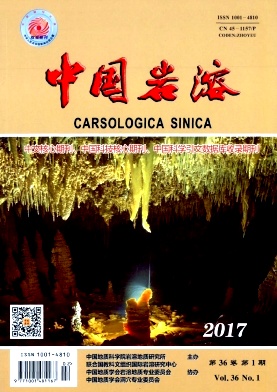HE Ruoxue, SUN Ping'an, HE Shiyi, YU Shi, MO Jianying, QIN Xinxing, ZHANG Taicheng, GUO Yasi, ZHANG Tao. Variation of inorganic carbon flux in the middle and downstream of the Lijiang river[J]. Carsologica Sinica, 2017, (1): 109-118. doi: 10.11932/karst20170114
| Citation: |
HE Ruoxue, SUN Ping'an, HE Shiyi, YU Shi, MO Jianying, QIN Xinxing, ZHANG Taicheng, GUO Yasi, ZHANG Tao. Variation of inorganic carbon flux in the middle and downstream of the Lijiang river[J]. Carsologica Sinica, 2017, (1): 109-118. doi: 10.11932/karst20170114
|
Variation of inorganic carbon flux in the middle and downstream of the Lijiang river
-
Abstract
Water samples of the Lijiang river were collected every month from January 2014 to December 2014 at Guilin and Yangshuo hydrological sections to study the dynamic response process of inorganic carbon flux and its influencing factors in the karst surface river.The results show that the hydrochemical characteristics of the karst river change downstream and the SIc and SId values are increasing as well.Meanwhile,the inorganic carbon flux also increased,with the higher in the wet season and the lower in the dry season,indicating the process was controlled by the hydrological cycle.The inorganic carbon flux was calculated to be 7.42 × 107 kgCO2 · a-1 in Guilin section and 27.9 × 107 kgCO2 · a-1 in Yangshuo section,respectively.The inorganic carbon flux formed by the weathering of carbonate and silicate rocks accounts for 72.67% and 5.21 %of the total inorganic carbon flux,respectively,at Guilin section,while it accounts for 87.51% and 2.89 %at Yangshuo section,indicating that the proportion of silicate rock weathering is decreasing along the river course while that of carbonate rock increases.The carbon sink intensity of Guilin section is 2.69 × 104 kgCO2 · km 2 · a 1 while it is 9.89× 104 kgCO2 · km-2 · a-1 at Yangshuo section,which is 5 times that of Guilin section.Besides precipitation,branch river recharge and the organic carbon accumulation of aquatic organisms,the mixed corrosion of allogenic recharge is also a major reason for the increase of inorganic carbon flux in the karst areas.
-

-
-
Access History







 DownLoad:
DownLoad: